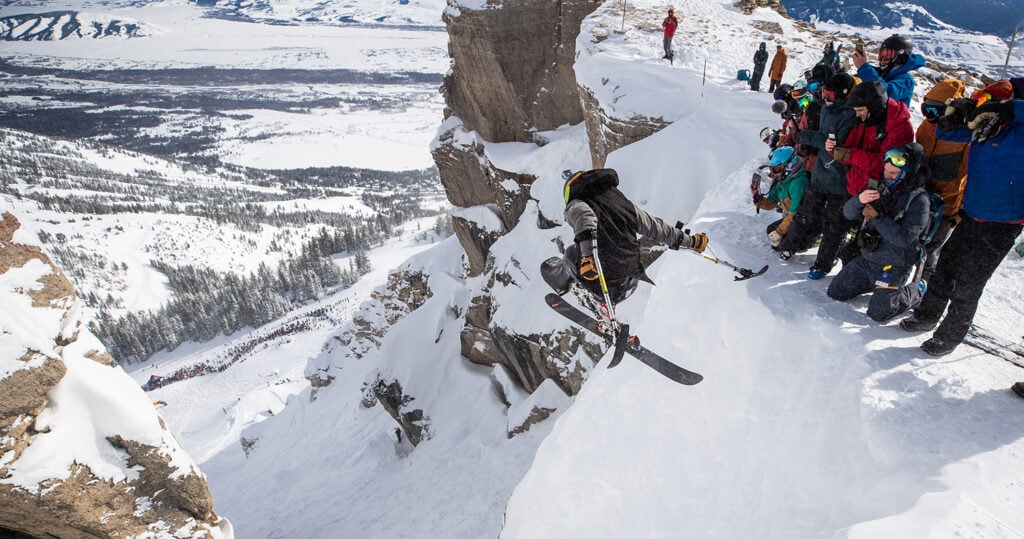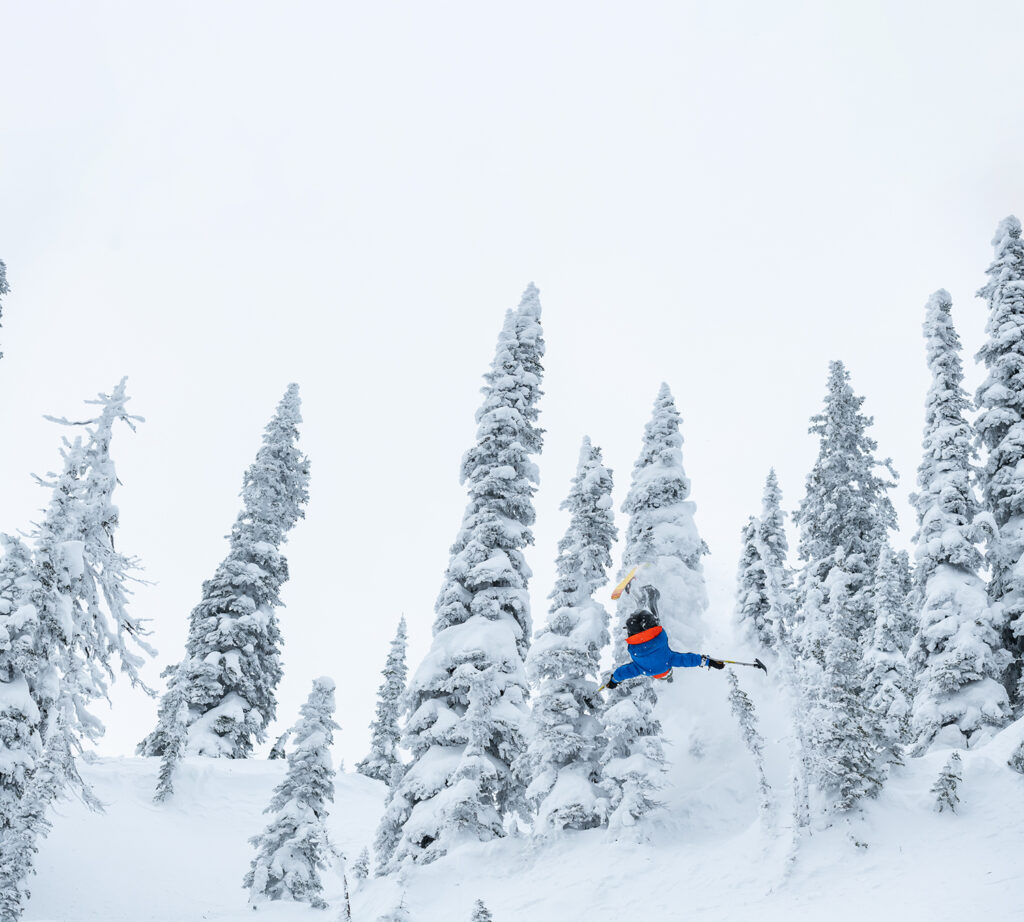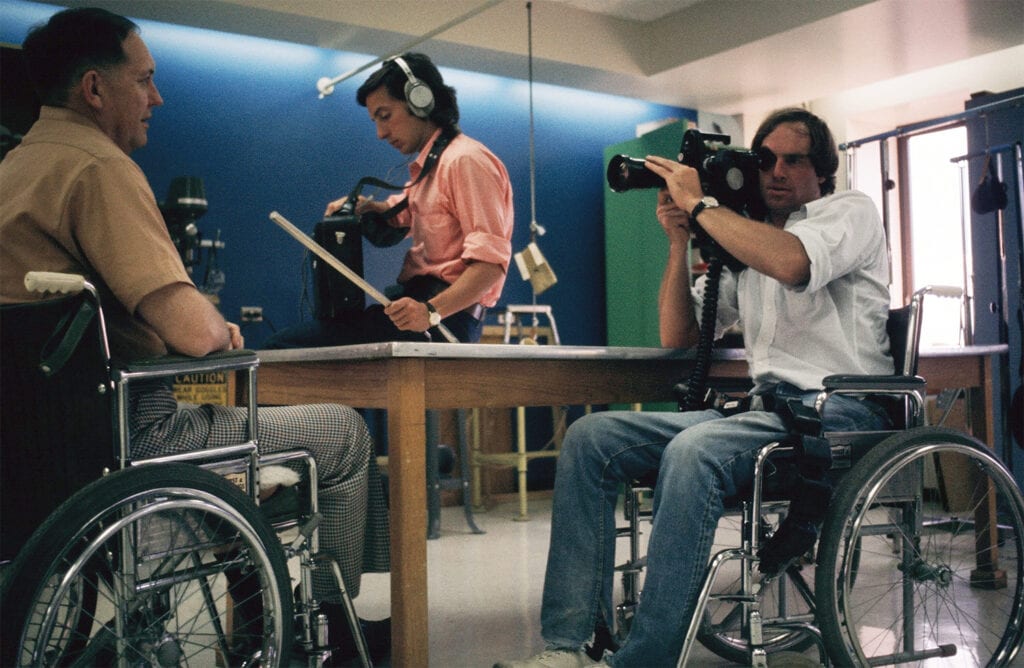Full Circle Documentary Follows the Tracks of Two Boundary-Pushing Wheelchair Users
October 16, 2023
Seth McBride
In February 2019, Trevor Kennison did something that no sit-skier had done before. At a professional ski/snowboard contest in Jackson Hole, Wyoming, he launched himself off a snow cornice into Corbet’s Couloir, one of the most difficult and legendary ski runs in North America. At the time, Kennison was a relatively little-known skier based out of Colorado. By the time he skied out the bottom of Corbet’s, Kennison had put the action sports world on notice: He was ready to take sit-skiing to a level no one had ever seen.
The feat made a bigger impact on the skiing and snowboarding community than it did in the disability community. Freeskier magazine dubbed Kennison’s accomplishment “the send heard ’round the world.” Skiers who knew things knew about Corbet’s, but they didn’t know how Corbet’s got its name; longtime New Mobility readers may know the name Barry Corbet, our editor from 1991 to 2000, but most of them probably don’t know anything about the run that bears his name.
Those are the two worlds that the new documentary Full Circle seeks to piece together. It tracks Kennison’s journey from wayward youth and nondisabled recreational snowboarder, through his 2014 accident at Vail Pass in Colorado and the “post-traumatic growth” following his T11-12 spinal cord injury. It weaves in Corbet’s story, using Corbet’s own words from his 1980 book, Options, as narration for the journey that both men take to find acceptance and ultimately thrive in their new, wheelchair-using lives.
Too Good To Be True
Located at Jackson Hole Mountain Resort, Corbet’s Couloir is a steep chute, hemmed in by vertical rock on three sides. Legend goes that Barry Corbet spied this frightening passage while working as a mountain guide in 1960, and said, “Someday somebody will ski that.” Corbet’s name got stuck on the couloir, which was first skied by a Jackson Hole ski patroller in 1967 and shortly therafter by Corbet himself, and then the connection was mostly lost to the passage of time.
When ski film director Josh Berman first signed on to do a project with Kennison, it was supposed to be a short film about Kennison returning to ski Vail Pass, where he’d broken his back. Then, Kennison dropped into Corbet’s Couloir, and there was no way the movie couldn’t feature that. In a chance encounter at a memorial service, Berman got talking to a friend’s parents who had worked at Craig Hospital in Englewood, Colorado, and knew Corbet. His friend’s mom commented on how cool it was that he was doing a project with Kennison and Corbet’s Couloir, what with Barry Corbet being a paraplegic. “It didn’t make sense,” says Berman. “I remember thinking to myself, ‘Oh sure, sweet old lady, that’s great, but Trevor’s the paraplegic.’ Whatever I said to her, she was like, ‘You don’t know, do you?’”
Full Circle will be screening at theaters across the country this winter. The filmmakers expect it to be streaming on major platforms in January 2024. Visit fullcirclefilm.co for showings and updates.

As the woman filled him in on the outlines of Corbet’s story — an adventurer and mountaineer who was on the first American team to summit Mount Everest, then broke his back in a helicopter accident while making a ski movie, and would go on to become a disability sports, filmmaking and storytelling pioneer — Berman couldn’t believe what he was hearing. “My mind was blown,” he says. “The further down the rabbit hole we went, the more compelling and wild it became, not only Barry’s story, but also his connections to Trevor. It became a much bigger project and a much more universal story.”
The Journey
The resulting film is a fascinating watch for skiers, and for people who don’t care a lick about skiing. Kennison is a likeable hero, quick to laugh and find joy as he progresses in his skiing, and also unafraid to share his struggles — whether with drugs and depression before his accident or with the unglamorous realities of pissing himself in a sit ski and worrying about how he’ll be able to have children post-accident.
Kennison’s path as a skier provides a unique perspective, in part, because Kennison wasn’t that good before he got hurt. “There are lots of stories of very talented people out in the world who get injured and then work really hard to regain some degree of performance similar to their pre-injury level. But Trevor was just a recreational, Joe Schmo snowboarder,” says Berman. “His story is so awesome to me because he’s performing at a higher level as an adaptive athlete than he ever was as [a nondisabled] athlete.”

Corbet’s own journey and wisdom provide the depth that should make Full Circle enjoyable for anyone interested in the full spectrum of the disability experience. Corbet’s life, both pre- and post-disability, is fit for a movie. For wheelchair users who don’t know of him or how he helped change the way our community sees and talks about disability, Full Circle serves as a good primer and motivation to look up some of his writing.
The way the filmmakers structured the movie, it sounds as if Corbet is often speaking directly to Kennison, though really, he is talking to all of us who’ve had a traumatic injury:
“I don’t want to tell you that life will become easier, or the choices simpler, or that spinal cord injury is in any way beneficial to one’s mental and physical health, because those things aren’t true.
“I do want to tell you that this monumental inconvenience can be lived through, lived with, loved with, laughed with, surmounted, shared, transcended, and that you have not been deprived of choice. You do have a lot of options. You can be OK if you choose to be OK. The future, however unfathomable, is yours.”
Support New MobilityWait! Before you wander off to other parts of the internet, please consider supporting New Mobility. For more than three decades, New Mobility has published groundbreaking content for active wheelchair users. We share practical advice from wheelchair users across the country, review life-changing technology and demand equity in healthcare, travel and all facets of life. But none of this is cheap, easy or profitable. Your support helps us give wheelchair users the resources to build a fulfilling life. |


Excellent. For those who are interested in a more complete account of Barry Corbet’s life, you might want to view the cover story I wrote for the Dartmouth Alumni Magazine, reprinted in New Mobility: https://newmobility.com/paraplegic-barry-corbet-nothing-missed-no-regrets/ . With thanks, Broughton Coburn